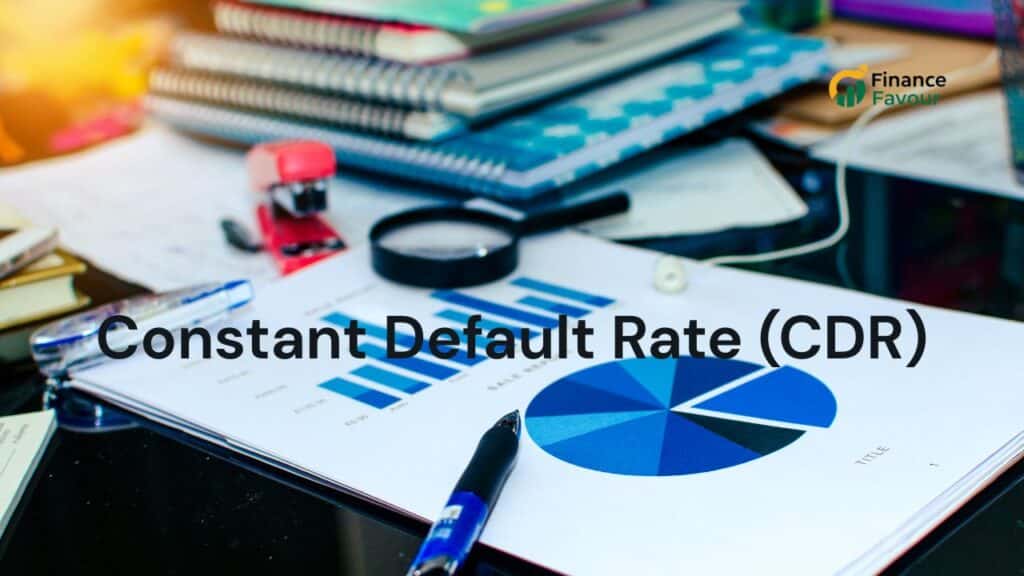Navigating the complex world of interest rates can be daunting, especially when deciding between floating and fixed options for your financial needs. Floating interest rates, also known as variable interest rates, offer flexibility by fluctuating with market conditions, potentially leading to lower initial costs compared to their fixed-rate counterparts. Understanding how floating interest rates work, including the benchmarks they follow, is crucial for borrowers and investors aiming to optimize their financial strategies. In this article, we will delve into the benefits and risks of floating interest rates, providing you with the knowledge to make informed decisions. Whether you’re a foreign investor eyeing U.S. real estate or a borrower seeking the best loan terms, our expert insights will guide you through selecting the most suitable interest rate plan.
Understanding Floating Interest Rates
Floating interest rates are a fundamental concept in finance, offering both opportunities and challenges for borrowers and investors. Let’s explore the key aspects of these variable rates and how they function in various financial products.
Definition and Key Features
A floating interest rate, also known as a variable interest rate, is a type of interest that fluctuates over time based on market conditions. Unlike fixed rates, which remain constant, floating rates adjust periodically according to a benchmark or index.
Key features of floating interest rates include their variability, which can lead to both lower and higher payments over time. They often start lower than fixed rates, making them attractive to borrowers seeking initial affordability.
These rates are typically tied to widely recognized financial benchmarks such as the LIBOR (London Interbank Offered Rate) or the prime rate. The frequency of rate adjustments can vary, ranging from monthly to annually, depending on the specific financial product and agreement terms.
How Floating Interest Rates Work
Floating interest rates operate on a simple principle: they change in response to market conditions. This mechanism involves several components working together to determine the final rate a borrower pays.
- Base Rate: This is the foundation of the floating rate, usually a widely recognized benchmark like the Federal Funds Rate or LIBOR.
- Margin: Lenders add a fixed percentage, known as the margin, to the base rate. This margin is determined by factors such as the borrower’s creditworthiness and the type of loan.
- Adjustment Frequency: The rate is recalculated at predetermined intervals, which can range from daily to annually, depending on the financial product.
For example, if a mortgage has a base rate of 2% and a margin of 2%, the initial interest rate would be 4%. If the base rate increases to 3%, the new interest rate would adjust to 5% at the next scheduled recalculation.
Common Financial Products with Variable Rates
Floating interest rates are prevalent in various financial products, each tailored to different needs and market segments. Understanding these products is crucial for making informed financial decisions.
Adjustable-Rate Mortgages (ARMs) are popular home loans that typically offer lower initial rates compared to fixed-rate mortgages. They adjust periodically, often annually, based on market indices.
Home Equity Lines of Credit (HELOCs) usually come with variable rates, allowing homeowners to borrow against their home’s equity with flexible interest terms.
Personal Loans and Credit Cards frequently use variable rates, especially those offering introductory or promotional rates that later adjust based on the prime rate or other benchmarks.
In the business world, Commercial Loans and Business Lines of Credit often feature floating rates, providing companies with flexible financing options that can adapt to changing economic conditions.
Benefits of Floating Interest Rates
Floating interest rates offer several advantages that can make them an attractive option for certain borrowers and investors. Let’s explore the key benefits of choosing a variable rate over a fixed one.
Potential for Lower Payments
One of the primary attractions of floating interest rates is the potential for lower payments, especially in the initial stages of a loan or investment. This benefit can be particularly appealing in certain market conditions.
During periods of low interest rates, borrowers with floating rates can enjoy significantly lower payments compared to those with fixed rates. This can result in substantial savings over time, especially for large loans like mortgages.
For investors, floating rates can offer higher yields when market rates rise, potentially outperforming fixed-rate investments. This flexibility allows for better alignment with current market conditions.
However, it’s important to note that while the potential for savings exists, it comes with the risk of rate increases, which we’ll discuss in later sections.
Flexibility in Changing Markets
Floating interest rates provide a level of flexibility that fixed rates simply can’t match. This adaptability can be beneficial in various market scenarios and personal financial situations.
In a declining rate environment, borrowers automatically benefit from lower interest charges without the need to refinance. This can save time, money, and paperwork associated with loan modifications.
For those planning to sell or refinance in the near future, floating rates can offer lower initial costs without the long-term commitment of a fixed rate. This can be particularly advantageous in the real estate market.
Additionally, some floating rate products offer conversion options, allowing borrowers to switch to a fixed rate if market conditions change unfavorably, providing an extra layer of flexibility.
Strategic Financial Planning
Floating interest rates can play a crucial role in strategic financial planning, offering opportunities for savvy borrowers and investors to optimize their financial positions.
For businesses, floating rates can align borrowing costs with revenue fluctuations, especially in industries with cyclical income patterns. This can help manage cash flow more effectively during different economic phases.
Investors can use floating rate products to diversify their portfolios and hedge against interest rate risks. This strategy can be particularly effective in balancing fixed-income investments during periods of rising rates.
Moreover, the lower initial rates of floating rate products can free up capital for other investments or expenses, allowing for more dynamic financial management and potentially higher overall returns.
Risks of Floating Interest Rates
While floating interest rates offer potential benefits, they also come with inherent risks that borrowers and investors must carefully consider. Understanding these risks is crucial for making informed financial decisions.
Exposure to Interest Rate Fluctuations
The primary risk associated with floating interest rates is the exposure to market fluctuations, which can lead to increased costs over time. This volatility can have significant impacts on financial planning and budgeting.
When market rates rise, borrowers with floating rate loans will see their interest payments increase. This can lead to higher monthly payments, potentially straining budgets and affecting overall financial stability.
For investors, falling interest rates can result in lower returns on floating rate investments. This can be particularly challenging for those relying on interest income for living expenses or specific financial goals.
It’s important to note that interest rate changes can be unpredictable and influenced by various economic factors, making it difficult to accurately forecast long-term costs or returns.
Uncertainty in Long-Term Costs
The variable nature of floating interest rates introduces an element of uncertainty into long-term financial planning. This unpredictability can complicate decision-making processes for both individuals and businesses.
For borrowers, it can be challenging to accurately project future loan costs, especially for long-term commitments like mortgages. This uncertainty can make it difficult to plan for major life events or investments.
Businesses relying on floating rate loans may face challenges in forecasting expenses and cash flow. This can impact strategic planning, investment decisions, and overall financial management.
In some cases, the potential for significant rate increases can lead to financial stress or even default if borrowers are unable to manage higher payments. This risk is particularly acute for those with limited financial flexibility.
Impact on Budgeting and Planning
The variability of floating interest rates can have a substantial impact on personal and business budgeting strategies. This can necessitate more frequent financial reviews and adjustments.
Individuals may need to maintain larger emergency funds or buffer savings to account for potential rate increases. This can limit the ability to allocate funds to other financial goals or investments.
For businesses, floating rates can introduce volatility into financial statements, potentially affecting investor perceptions and credit ratings. This can have implications for future borrowing capacity and overall financial health.
Additionally, the need for constant monitoring and potential adjustments to financial plans can be time-consuming and may require more sophisticated financial management skills or professional advice.
Comparing Floating vs Fixed Interest Rates
Choosing between floating and fixed interest rates is a crucial decision that can significantly impact your financial future. Let’s compare these two options to help you make an informed choice.
Stability vs Flexibility
The primary distinction between fixed and floating rates lies in their stability and flexibility characteristics. Understanding this trade-off is essential for aligning your choice with your financial goals.
Fixed rates offer predictability, with consistent payments throughout the loan term. This stability can be beneficial for long-term planning and budgeting, especially for those with fixed incomes or risk-averse financial strategies.
Floating rates, conversely, provide flexibility and the potential for savings in favorable market conditions. They can be advantageous for those comfortable with some level of uncertainty and capable of managing potential rate increases.
The choice often depends on individual circumstances, such as financial stability, risk tolerance, and market outlook. Some borrowers may even opt for a combination of both types to balance their financial portfolio.
Cost Implications Over Time
The long-term cost implications of choosing between fixed and floating rates can be significant. Understanding these potential differences is crucial for making a decision aligned with your financial objectives.
Fixed rates typically start higher than floating rates but provide certainty over the loan term. This can result in higher overall costs if market rates remain low or decrease, but protects against rising rates.
Floating rates often offer lower initial costs but can become more expensive if market rates increase. The potential for savings exists if rates remain low or decrease, but there’s also a risk of significantly higher costs over time.
To illustrate:
| Scenario | Fixed Rate | Floating Rate |
| Rates Rise | Consistent payments | Increasing payments |
| Rates Fall | Consistent payments | Decreasing payments |
| Rates Stable | Consistent payments | Relatively stable payments |
Choosing Based on Financial Goals
Selecting between fixed and floating rates should align with your broader financial goals and circumstances. This decision can impact various aspects of your financial life, from short-term budgeting to long-term wealth building.
For those prioritizing predictability and stable budgeting, fixed rates may be more suitable. This is often the case for first-time homebuyers, retirees, or those with fixed incomes.
Floating rates might be preferable for those seeking initial affordability or planning to sell or refinance in the near future. They can also be advantageous for those with rising incomes or the financial flexibility to handle potential rate increases.
Consider factors such as your income stability, future financial plans, and overall risk tolerance when making this decision. It’s often beneficial to consult with financial advisors to align your choice with your comprehensive financial strategy.
Making the Best Choice for Your Needs
Deciding between floating and fixed interest rates requires careful consideration of your personal financial situation, market conditions, and long-term goals. Here’s how to approach this important decision.
Assessing Your Risk Tolerance
Understanding your risk tolerance is crucial when choosing between floating and fixed interest rates. This assessment involves evaluating your financial stability and comfort level with potential rate fluctuations.
Consider your income stability and future earning potential. If you have a steady, predictable income, you might be better equipped to handle the potential variability of floating rates.
Evaluate your financial buffer – do you have sufficient savings or assets to manage potential rate increases? This cushion can provide security if you opt for a floating rate.
Reflect on your emotional response to financial uncertainty. If the idea of changing interest rates causes significant stress, a fixed rate might be more suitable for your peace of mind.
Remember, risk tolerance can change over time, so it’s important to reassess periodically, especially before making major financial decisions.
Evaluating Current Market Conditions
Current market conditions play a significant role in the floating vs. fixed rate decision. Understanding the economic landscape can help you make a more informed choice.
Research current interest rate trends and economic forecasts. If rates are historically low and expected to rise, locking in a fixed rate might be advantageous.
Consider the yield curve, which shows the relationship between short-term and long-term interest rates. A flat or inverted yield curve might suggest different strategies compared to a normal yield curve.
Pay attention to central bank policies and economic indicators that could influence future interest rate movements. These factors can provide insights into potential rate trends.
Remember that while market analysis is important, predicting long-term interest rate movements with certainty is challenging. Balance market insights with your personal financial situation and goals.
Consulting with Financial Experts
Given the complexity of interest rate decisions, seeking professional advice can be invaluable. Financial experts can provide personalized guidance based on your unique situation.
Consult with mortgage brokers or loan officers who can offer insights into various loan products and their suitability for your needs. They can often provide scenarios comparing fixed and floating rate options over time.
Financial advisors can help integrate your interest rate decision into your broader financial plan. They can assess how different rate options align with your long-term financial goals and risk management strategy.
Consider seeking opinions from multiple experts to gain a well-rounded perspective. This can include independent financial advisors, bank representatives, and real estate professionals if you’re dealing with property investments.
Remember, while expert advice is valuable, the final decision should align with your personal financial objectives and comfort level. Use professional insights to inform your decision, but ensure it feels right for your individual circumstances.




